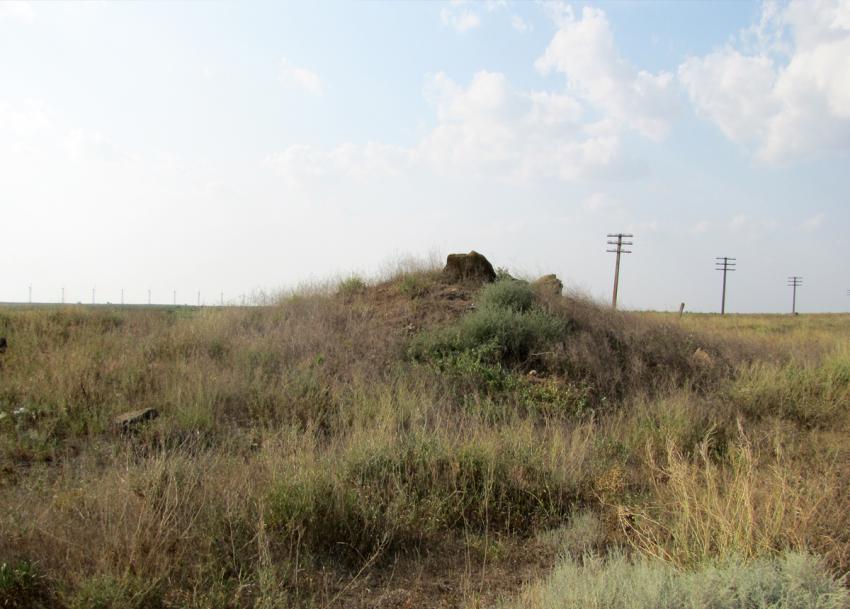The first massacre of Mountain Jews by the Nazis took place in this Shaumian kolkhoz. In March 1942, a local citizen reported to the German authorities that there were some Jews still left there (after the killing of the local Ashkenazi Jews, which had taken place at the kolkhoz previously). Immediately thereupon, the German Military Police (Feldkommandatur 810) and Einsatzgruppe D, with the help of local collaborators, executed all 114 Mountain Jews who lived at the kolkhoz.
The conquest of the North Caucasus, with its vast oil fields, was one of the two main goals of the 1942 summer offensive of the Wehrmacht. In the second half of 1942, German troops occupied a segment of the North Caucasus where there were some Mountain Jewish settlements.
The first communities of Mountain Jews in the Caucasus to be captured by the Germans in late August 1942 were two kolkhozes in Menzhinskoe and Bogdanovka. There, the Mountain Jews made up a significant percentage of the entire Jewish population, and they lived alongside Ashkenazi Jews. After being subjected to abuse and looting of their property, scores of Mountain Jewish families who had remained in these villages were murdered with machine guns on August 19 and September 20, 1942. These two massacres claimed a total of about 850 victims.
The Germans occupied only two major urban centers that were home to several thousand Mountain Jews: Mozdok (occupied for 4.5 months) and Nal’chik (occupied for only two months).
In the town of Mozdok, several hundred Mountain Jews were abused and occasionally murdered, but not subjected to wholesale extermination. They were employed in leather production, which apparently secured their survival.
In the town of Nalchik, the Germans plundered the property of the local Mountain Jews and sent them to perform humiliating forced labor in the area, without supplying them with food. All the Mountain Jews were detained and placed in a camp in a certain neighborhood of Nal’chik, with no provisions. Some of the men were beaten and murdered.
Initially, the Mountain Jews were probably murdered along with their Ashkenazi counterparts, as part of the general genocidal Judenpolitik of the Nazis. By mid-October 1942, the Mountain Jews, with the help of the local population, were able to convey to the Germans that they were a separate ethnic group unrelated to the "real" Jews. The Germans then decided to halt further killings of Mountain Jews, pending investigation.
The researchers in Germany did not formulate their opinion on the extent of the "Jewishness" of the Mountain Jews. Nor did the decision-makers in Berlin render their verdict. As part of this research "project," SS officers questioned witnesses from among this group and interviewed members of other local ethnicities on the subject of the Mountain Jews; they visited the residences of Mountain Jews in the North Caucasus and attended their ceremonies, such as weddings. For their part, according to a Mountain Jew’s testimony, the elders of the community showed the Germans cradles that looked like those of the Kabardians, “in order to prove that they were not European Jews.” Of crucial importance was the Mountain Jews’ attempt to influence the investigation indirectly by garnering the support of their Muslim neighbors, primarily the Kabardians. The Germans made two important preliminary conclusions: 1) The Mountain Jews did not look Jewish, and 2) they practiced polygamy. The latter fact was attributed to the influence of Islam on them. By late December 1942, Einsatzgruppe D had ruled that the Mountain Jews were unrelated to the Jews, and that they had to be referred to as a Tat people.
To summarize, in the early stages of the occupation, the Germans did not regard the Mountain Jews as a distinct group – but, rather, as part of the broader Jewish population, which was targeted for complete eradication. As a result, except for the case of Mozdok (which seems to have been a local initiative), the Germans exterminated Mountain Jews wherever they found them. However, once the Mountain Jews had managed to convey to the Germans that they were a separate ethnic group unrelated to the Jews, an investigation was launched. Were it not for this initiative, it appears that the group’s fate would have been sealed. The preliminary findings of this investigation worked in favor of the Mountain Jews, sparing them from total destruction.
After the war, Mountain Jews continued to pursue a path of secularization, acculturation, and urbanization, which gained momentum, particularly following the collapse of the Soviet Union in 1991. Substantial numbers of Mountain Jews relocated to Moscow and Pyatigorsk, as well as to the United States and Israel, further amplifying the latter trend.







